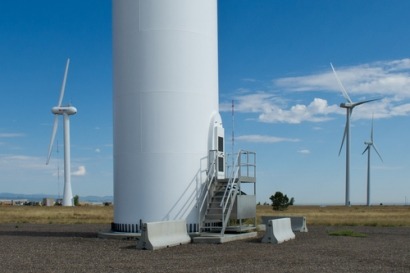
The UK government has introduced new guidance to local authorities which will effectively prevent them from imposing “inflexible rules” on low carbon and renewable energy developments such as solar farms and wind farms.
There have been instances where local authorities have sought to set minimum distances between wind turbines and properties, but the new guidance released by Communities Secretary Eric Pickles advises planners not to rule out renewable energy projects over proximity to dwellings. According to Emma Winter, senior planner at Carter Jonas in Harrogate, the document clarifies existing policies, a move that will help future renewable energy planning proposals.
“It clearly identifies that councils should not impose buffer zones or separation distances in order to reject proposed wind farms or solar projects, other than for safety reasons” Ms Winter said, “which effectively puts a stop to some councils’ recent efforts to impose buffer zones as a means of blocking developments.”
Local authorities have attempted to introduce buffer zones between wind farms and homes by including them in supplementary documents. In April 2013 a High Court Judge ruled that a buffer zone proposed by Milton Keynes Borough Council was unlawful although the judgement also left a door open for other councils to introduce similar policies.
The ‘Planning Practice Guidance for Renewable and Low Carbon Energy’ document has been released by the Department for Communities and Local Government (DCLG) and replaces the ‘Planning for Renewable Energy: A Companion Guide to PPS22’. It stresses the importance of generation energy from renewables as a means of securing a secure energy supply for the UK in addition to reducing greenhouse gas emissions and stimulating investment thereby creating new jobs and businesses. The document states that local planning authorities “should not rule out otherwise acceptable renewable energy developments through inflexible rules on buffer zones or separation distances. Other than when dealing with ‘set back’ distances for safety, distance of itself does not necessarily determine whether the impact of a proposal is unacceptable.”
Additionally, the document recommends that planners should pro-actively identify areas suitable for renewable energy development in order to clarify where such projects will be permitted. It also advises that positive weight should be given to projects which have local community involvement and leadership.
Further information:

